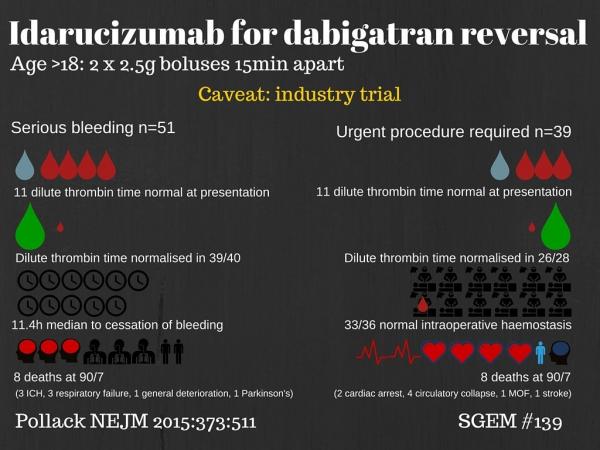
Idarucizumab’s binding to dabigatran is mediated by hydrophobic interactions, Hbonds, and a salt bridge, which result in a high affinity for dabigatran. With respect to the molecular recognition and binding of dabigatran, idarucizumab has structural similarities to thrombin, but idarucizumab lacks enzymatic activity. These were then humanized to minimize immunogenicity. Mab fragments that were produced in Chinese hamster ovary (CHO) cells were selected according to potency of dabigatran-binding affinity. Idarucizumab was identified by screening dabigatran-specific monoclonal antibodies (mAbs) generated by immunizing mice with dabigatran-derived haptens coupled to carrier proteins. This drug effectively reversed anticoagulation by dabigatran within minutes, and with the trade name Praxbind, it has gained the approval for marketing in USA, Europe Union, Canada, Australia, and Japan.

It binds to and inactivates dabigatran and its active acylglucoronide metabolites. Idarucizumab (BI 655075) is a murine-derived, humanized, IgG1κ monoclonal antigen-binding fragment (Fab) developed by Boehringer Ingelheim Pharmaceuticals for the reversal of anticoagulant effects of dabigatran.


As a result, DOAC-specific reversal agents have been developed for clinical situations, in which, urgent anticoagulation reversal is required. However, as with all anticoagulants, bleeding complications are still a concern, and there is a need for anticoagulant reversal in specific clinical situations, such as in patients experiencing spontaneous or traumatic bleeds or in those requiring emergency surgery or other invasive procedures. Direct oral anticoagulants (DOACs), such as the direct factor (F) Xa inhibitors rivaroxaban, apixaban, and edoxaban, and the direct thrombin inhibitor dabigatran etexilate (Pradax, Pradax, and Prazaxa).


 0 kommentar(er)
0 kommentar(er)
